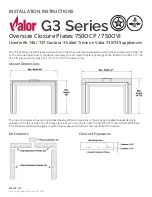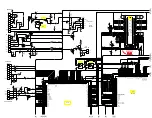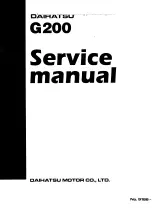
Page 29 of 69
Load Range -
This information identifies the tire's load-carrying capabilities and its inflation
limits.
Weighing methods needed to capture the various weights related to the RV. This would include
weights for the following: axles, wheels, hitch or pin (in the case of a trailer) and total weight.
TIRE SAFETY TIPS
Preventing Tire Damage
•
Slow down if you have to go over a pothole or other object in the road.
•
Do not run over curbs or other foreign objects in the roadway, and try not to strike the
curb when parking.
Tire Safety Checklist
•
Check tire pressure regularly (at least once a month), including the spare.
•
Inspect tires for uneven wear patterns on the tread, cracks, foreign objects, or other signs
of wear or trauma.
•
Remove bits of glass and foreign objects wedged in the tread.
•
Make sure your tire valves have valve caps.
•
Check tire pressure before going on a long trip.
•
Do not overload your vehicle. Check the Tire Information and Loading Placard or User’s
Manual for the maximum recommended load for the vehicle.
Steps for Determining Correct Load Limit
1.
Locate the statement “The combined weight of occupants and cargo should never exceed
XXX lbs” on your vehicles placard.
2.
Determine the combined weight of the driver and passengers that will be riding in your
vehicle.
3.
Subtract the combined weight of the driver and passengers from XXX kilograms or XXX
pounds.
4.
The resulting figure equals the available amount of cargo and luggage capacity. For
example, if the “XXX” amount equals 1400 lbs. and there will be five 150 lb. passengers
in your vehicle, the amount of available cargo and luggage capacity is 650 lbs. (1400-750
(5 x 150) = 650 lbs.)
5.
Determine the combined weight of luggage and cargo being loaded on the vehicle. That
weight may not safely exceed the available cargo and luggage capacity calculated in Step
# 4.
6.
If your vehicle will be towing a trailer, load from your trailer will be transferred to your
vehicle. Consult this Manual to determine how this reduces the available cargo and
luggage capacity of your vehicle.
Glossary of Tire Terminology
Accessory weight -
The combined weight (in excess of those standard items, which may be replaced) of
automatic transmission, power steering, power brakes, power windows, power seats, radio and heater, to
the extent that these items are available as factory installed equipment (whether installed or not).
Bead -
The part of the tire that is made of steel wires, wrapped or reinforced by ply cords and that is
shaped to fit the rim.
Bead separation -
This is the breakdown of the bond between components in the bead.
Bias ply tire -
A pneumatic tire in which the ply cords that extend to the beads are laid at alternate angles
substantially less than 90 degrees to the centerline of the tread.
Carcass -
The tire structure, except tread and sidewall rubber which, when inflated, bears the load.
Summary of Contents for T2801
Page 2: ...BIGFOOT TRAILER MANUAL DRAFT 8 APRIL 3 2008 ...
Page 36: ...Page 34 of 69 ...
















































